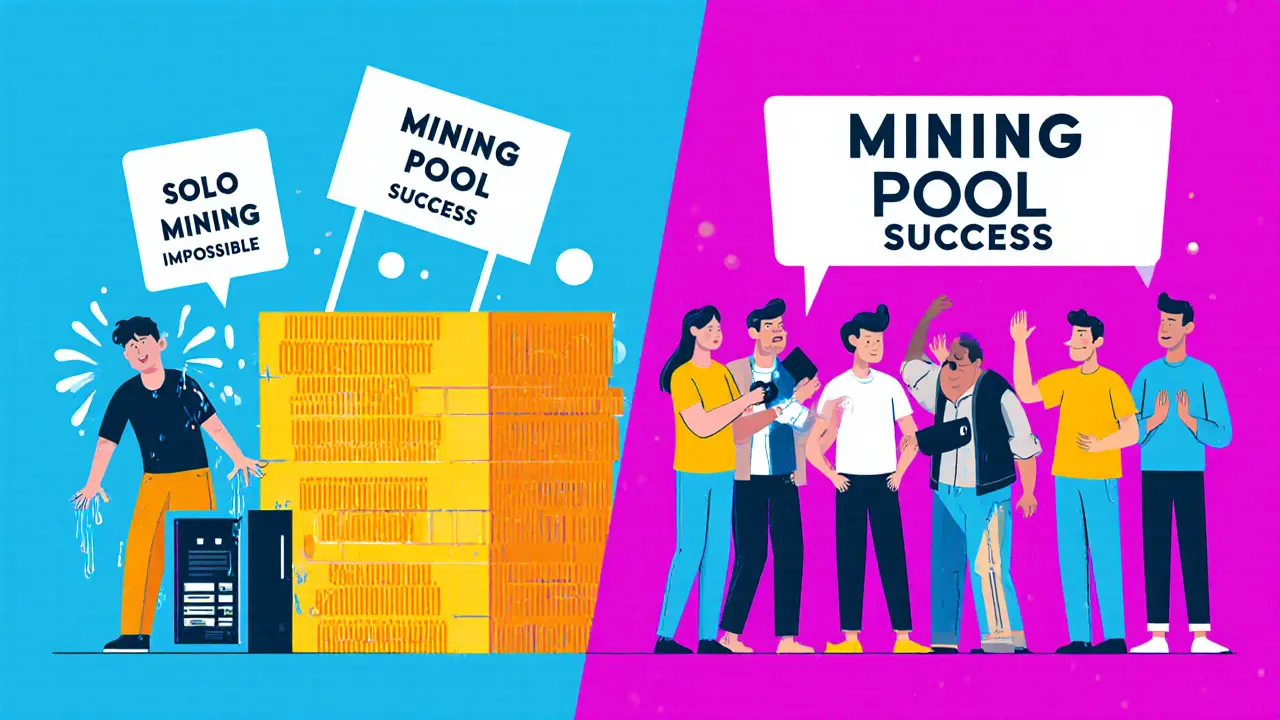Bitcoin Mining: How It Works, Costs & Future Trends
When talking about Bitcoin mining, the process of validating transactions and adding new blocks to the Bitcoin blockchain in exchange for newly minted BTC. Also known as BTC mining, it relies on the Proof of Work consensus. Proof of Work is a system where miners solve cryptographic puzzles; the first to find a valid solution earns the block reward. This core mechanic drives network security, but it also sets the stage for the next big factors: hardware choices and energy use.
One of the most talked‑about metrics in the mining world is hash rate, the total computational power devoted to solving those puzzles. Higher hash rate means more chances to win a reward, yet it also pushes the difficulty level upward, creating a feedback loop. Mining hardware—from early CPUs to today’s ASICs—directly determines how much hash power you can bring to the table. Modern ASIC miners deliver terahashes per second, but they come with hefty price tags and significant electricity demands.
Why Energy Consumption Matters
Energy consumption is the third pillar of the Bitcoin mining equation. Every hash attempt burns electricity, and because the network’s difficulty adjusts roughly every two weeks, miners constantly chase efficiency. Regions with cheap, renewable power have become hotspots; they lower operating costs and improve profit margins. At the same time, regulators are watching the carbon footprint, which means future policies could reshape where and how mining happens. Understanding the balance between energy consumption and profitability is key to making informed decisions.
So, how do these pieces fit together? Bitcoin mining encompasses proof of work, hash rate, mining hardware, and energy consumption. The three entities interact in a tight loop: better hardware raises hash rate, which raises network difficulty, which in turn drives up energy use. This loop influences everything from the price of a single Bitcoin to the geographic distribution of mining farms. Investors, hobbyists, and policymakers all need to grasp these relationships to evaluate risks and opportunities.
If you’re just starting out, focus on three practical steps: pick efficient ASIC hardware, locate a power source with low cost and stable supply, and calculate break‑even points using current Bitcoin price and difficulty levels. For seasoned miners, scaling up often means diversifying across multiple locations to hedge against regional energy price spikes or regulatory changes. Both groups benefit from keeping an eye on emerging trends like renewable‑powered mining hubs and advancements in chip design that promise higher hash rates per watt.
Below you’ll find a curated set of articles that dig deeper into each of these areas. From guides on selecting the right mining rig to analyses of global energy policies, the collection gives you actionable insights you can apply right now. Ready to explore the full landscape of Bitcoin mining? Dive into the posts and arm yourself with the knowledge that powers the world’s most valuable digital currency.







